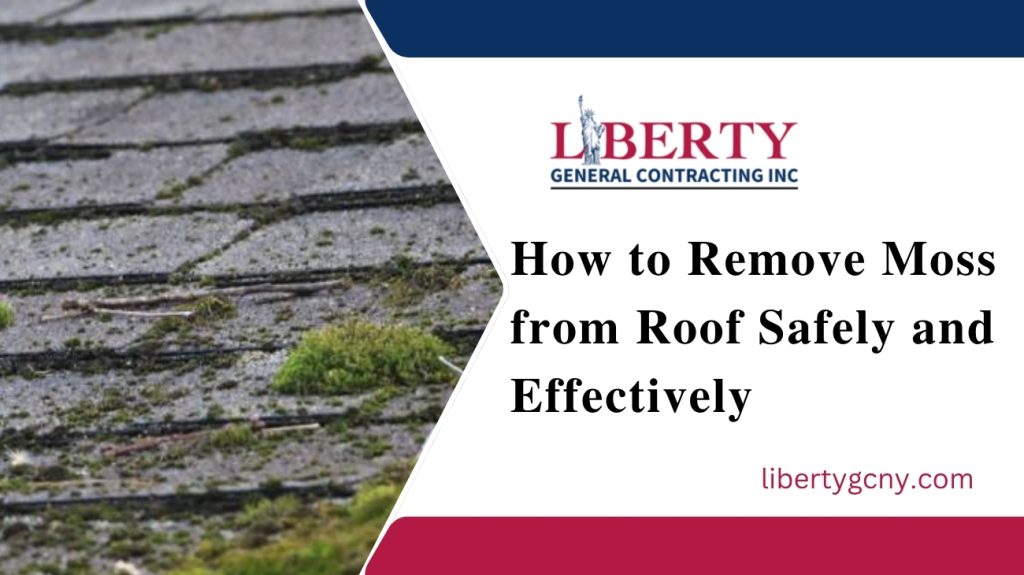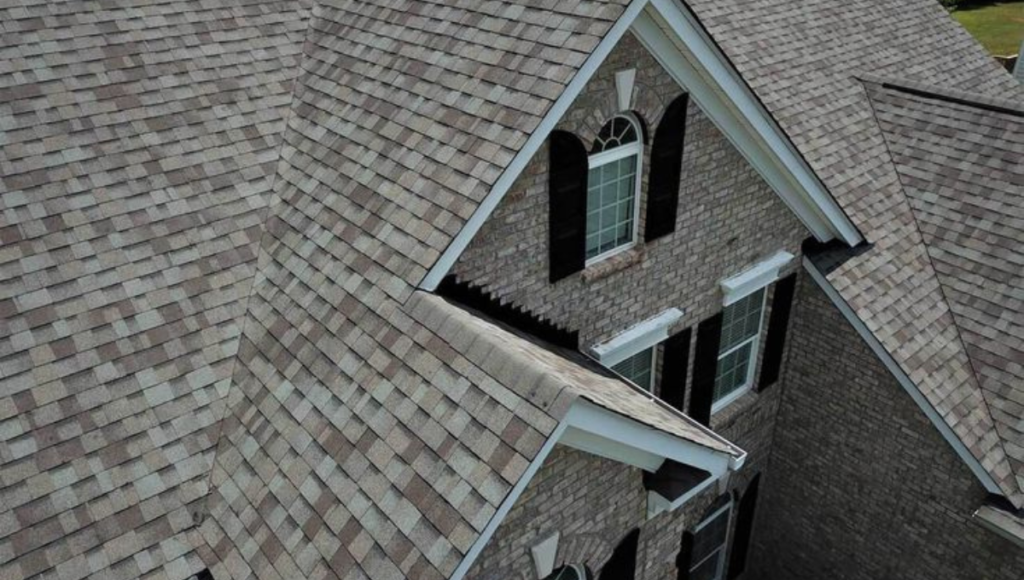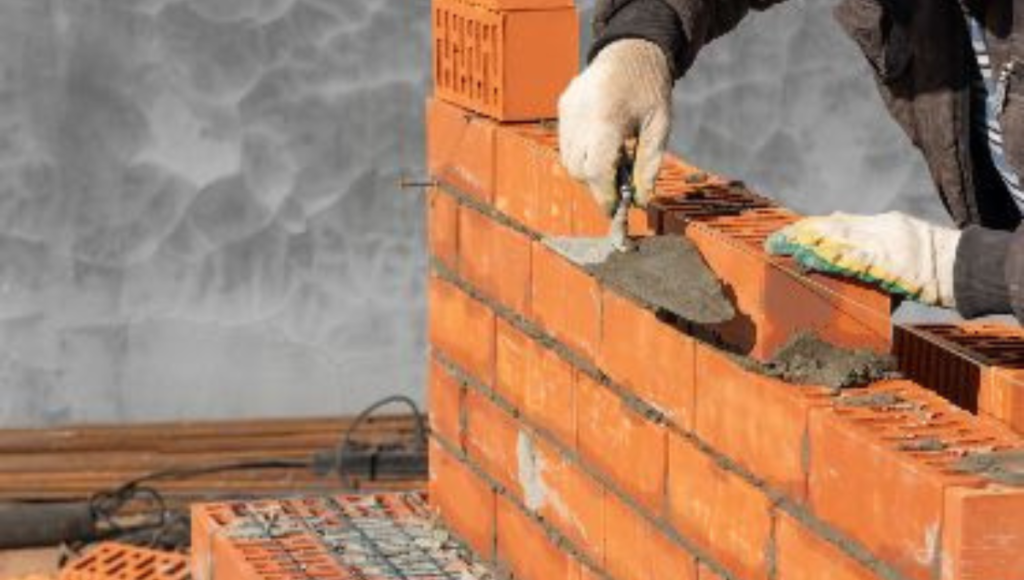Your roof protects your home from the elements, but over time, it can develop green patches of moss. While moss might look harmless or even a bit charming, it can actually damage your roofing materials and reduce your home’s lifespan. If you’ve been wondering how to remove moss from roof safely and effectively, you’re in the right place. At Liberty General Construction, we believe in keeping your roof clean, strong, and long-lasting. In this guide, we’ll explain what moss is, why it’s harmful, and how to remove moss from roof the right way without damaging your shingles or endangering yourself.
What Is Moss and Why Does It Grow on Roofs?
Moss is a small, green, sponge-like plant that thrives in moist, shaded environments. Roofs that don’t get much sunlight, especially on the north side or under trees, are prime spots for moss to grow. Over time, this growth can spread and hold moisture against your roof surface. The trapped moisture weakens shingles, causes decay, and can lead to costly roof repairs if left untreated. This is why knowing how to remove moss from roof is essential for roof care.
Why You Should Remove Moss from Your Roof
Many homeowners underestimate the damage moss can cause. Here are some important reasons why you should remove it as soon as possible:
- Prevents Roof Damage – Moss can lift and curl shingles, allowing water to seep in and cause leaks.
- Extends Roof Lifespan – Regular cleaning helps your roof last longer by preventing moisture buildup and decay.
- Improves Home Appearance – A moss-free roof instantly makes your home look clean and well-maintained.
- Avoids Costly Repairs – Addressing moss early can save you thousands of dollars in roof replacement later.
So, if you’re asking how to remove moss from a roof efficiently, the answer lies in doing it safely and using the right techniques.
Safety First: Precautions Before Cleaning
Before climbing onto your roof, always think about safety first. Roof cleaning can be slippery and dangerous. Follow these simple safety tips:
- Wait for a dry, calm day. Moss removal should never be done when the roof is wet or windy.
- Wear non-slip shoes. Rubber-soled shoes provide better traction.
- Use a sturdy ladder. Ensure it’s placed on level ground and securely tied.
- Protect your eyes and hands. Wear safety goggles and gloves when working with cleaning products.
- Don’t walk on steep roofs. If your roof is too steep, it’s best to call professionals like Liberty General Construction for safe and effective roof cleaning.

Step-by-Step Guide: How to Remove Moss from Roof Safely
Here’s a simple and effective way to how to remove moss from roof without causing damage.
Step 1: Gently Brush Away the Loose Moss
Use a soft-bristle brush or broom to gently remove the top layer of moss. Never use a pressure washer—it can strip away protective granules from shingles and shorten your roof’s life. Start brushing downward, following the direction of the shingles. Avoid brushing upwards or aggressively, as this can loosen or break shingles.
Step 2: Prepare a Cleaning Solution
To kill moss and prevent it from returning, you can make a simple cleaning solution using common household ingredients.
Homemade Moss Cleaner Options:
- Vinegar Solution: Mix 1 part white vinegar with 1 part water.
- Bleach Solution: Mix 1 part bleach with 3 parts water (for heavy moss growth).
Pour the solution into a garden sprayer for easy application.
⚠️ Tip: Always test a small area first. Some roofing materials, especially metal or painted surfaces, may react differently.
Step 3: Apply the Solution to the Moss
Spray the solution directly on the moss-covered areas. Allow it to sit for 15–20 minutes. This time lets the solution soak in and kill the moss roots. Avoid letting the mixture dry completely, as it may leave residue on your roof.
Step 4: Rinse the Roof Gently
Use a garden hose with low pressure to rinse off the moss and cleaning solution. Start from the top and work downward so water flows off the roof naturally. Do not use a pressure washer—it can easily damage asphalt shingles and void your roof warranty.
Step 5: Clean Gutters and Surrounding Area
After cleaning the roof, always clear out your gutters. Moss fragments, leaves, and debris can clog your drainage system and cause water overflow issues. Dispose of all moss properly—don’t leave it near your home or on the ground, as spores can spread and grow again.
Natural and Eco-Friendly Alternatives
If you prefer an eco-friendly method for how to remove moss from roof, here are some safe and natural options:
- Baking Soda Solution: Sprinkle baking soda directly on damp moss. The high pH will kill it within a few days.
- Hydrogen Peroxide Spray: Mix equal parts hydrogen peroxide and water in a spray bottle. It’s effective and safe for plants below the roof.
- Zinc or Copper Strips: Installing zinc or copper strips near the roof ridge prevents moss growth naturally. When rainwater washes over the metal, it releases ions that stop moss from forming.
How to Prevent Moss from Coming Back
Once your roof is clean, you’ll want to keep it that way. Preventing moss is easier than removing it again later. Here’s how:
- Trim Overhanging Branches: More sunlight means less shade and less moss growth.
- Clean Gutters Regularly: Keep water flowing away from your roof.
- Remove Debris Quickly: Leaves and dirt trap moisture—clean your roof twice a year.
- Install Zinc or Copper Strips: They act as natural moss deterrents.
- Schedule Professional Roof Inspections: Experts can catch early signs of moss and prevent future damage.
When to Call a Professional
If your roof is old, steep, or covered in heavy moss, it’s best not to do it yourself. A professional roofing company like Liberty General Construction has the right equipment and experience to clean your roof safely.
Our team uses industry-approved methods to:
- Remove moss without harming your shingles
- Inspect your roof for hidden damage
- Apply long-lasting moss prevention treatments
- Ensure your roof stays in excellent condition all year round
Professional cleaning not only protects your roof but also maintains your home’s value and curb appeal.
Common Mistakes to Avoid When Removing Moss
Even with good intentions, homeowners sometimes make mistakes that cause roof damage. Avoid these common errors:
- Using a pressure washer – This can remove the protective surface of shingles.
- Skipping safety gear – Falls are the #1 cause of roof cleaning injuries.
- Overusing bleach – Strong bleach can discolor shingles and harm nearby plants.
- Cleaning on a wet roof – Always wait for dry weather to prevent slips.
- Ignoring prevention – Moss will return if the root causes (shade and moisture) aren’t addressed.
Why Choose Liberty General Construction for Roof Care
At Liberty General Construction, we specialize in roofing solutions that protect your home and enhance its durability. Whether you need roof cleaning, moss removal, repair, or replacement, our licensed professionals handle every job with care and precision.
We use safe, proven methods that follow industry standards, keeping your home clean, safe, and beautiful. Our team proudly serves New York homeowners with reliable service, high-quality workmanship, and fair pricing. When it comes to your roof, trust the experts who care.
Final Thoughts
Knowing how to remove moss from roof safely and effectively helps you protect your home, save money, and extend your roof’s life. Moss might look small, but its damage can be serious if ignored.
Whether you choose to handle light moss on your own or hire professionals for larger jobs, regular maintenance is the key to a strong, long-lasting roof.
If you need expert help or want a free roof inspection, contact Liberty General Construction today. We’re here to keep your home safe, clean, and beautiful—one roof at a time.
Contact Liberty GCNY
Website: www.libertygcny.com
Phone: (347) 682-9840
Serving: Manhattan, Brooklyn, Queens, The Bronx, Westchester County, and Long Island.
Address:110-14 178th St, Jamaica, NY
Need Help with Your Next Project? Call Liberty GCNY Today!
Fast responses. Expert advice. Trusted service across NYC and beyond.


